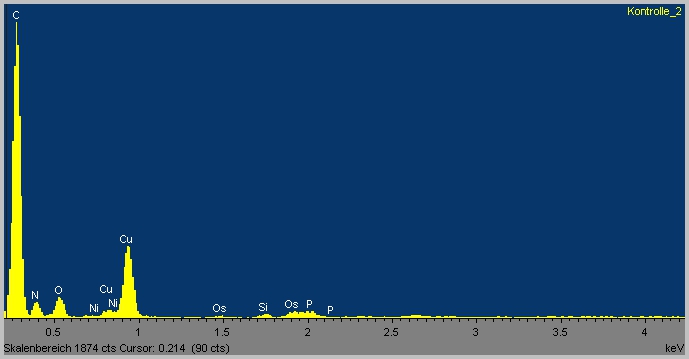Team:TU Darmstadt/Protocols/TEM-EDX
From 2012.igem.org
TEM-EDX-Measurements
Transmission Electron Microscopy is a mode of electronic microscopy where a electron beam is focoused an transmitted on a ultra thin probe (>100nm). The electron interaction of the whole thickness of the sample can be measured.
Energy Dispersive X-ray spectroscopy is an analytical technique to investigate the elemental composition and chemical characterization of a sample. It is based on the characteristically dispersion specra of an electron beam by each element. This method allows to identiy which elements are present in a measured sample.
If the TEM method is coupled with EDX its now possible to identify the specific element composition in the whole layer thicknes of a sample.
Experimental Set Up
After preparing[[1]] the sample we put it into an electron microscope and radiated with an electron beam. Due to the radiation electrons from the inner shell of the atoms in the probe are driven out and create an electron hole. While electrons from the an outer shell fall down into this hole they radiate an energy spectra. This spectra is characteristic for every element and gives us the total composition of the radiated probe. We use EDX measurements to proof the functionality of our chosen tricarboxylat tripartiate transporter. If the transporter is functional the composition of C and O atoms in the cytosol of our microorganism must be different from probes without the transporter.
Detected Spectra
 uninduced control
uninduced control

 check plot of the backround
check plot of the backround
 "
"




